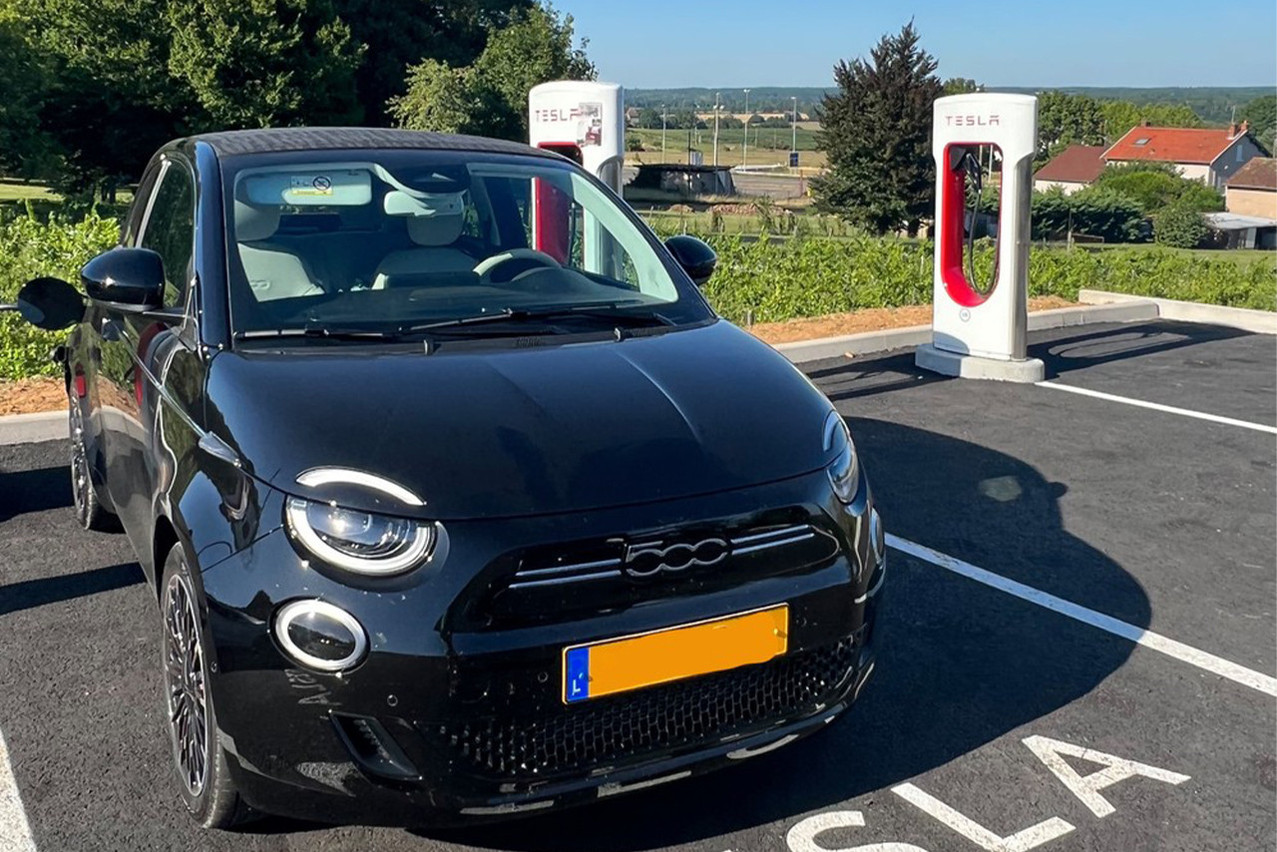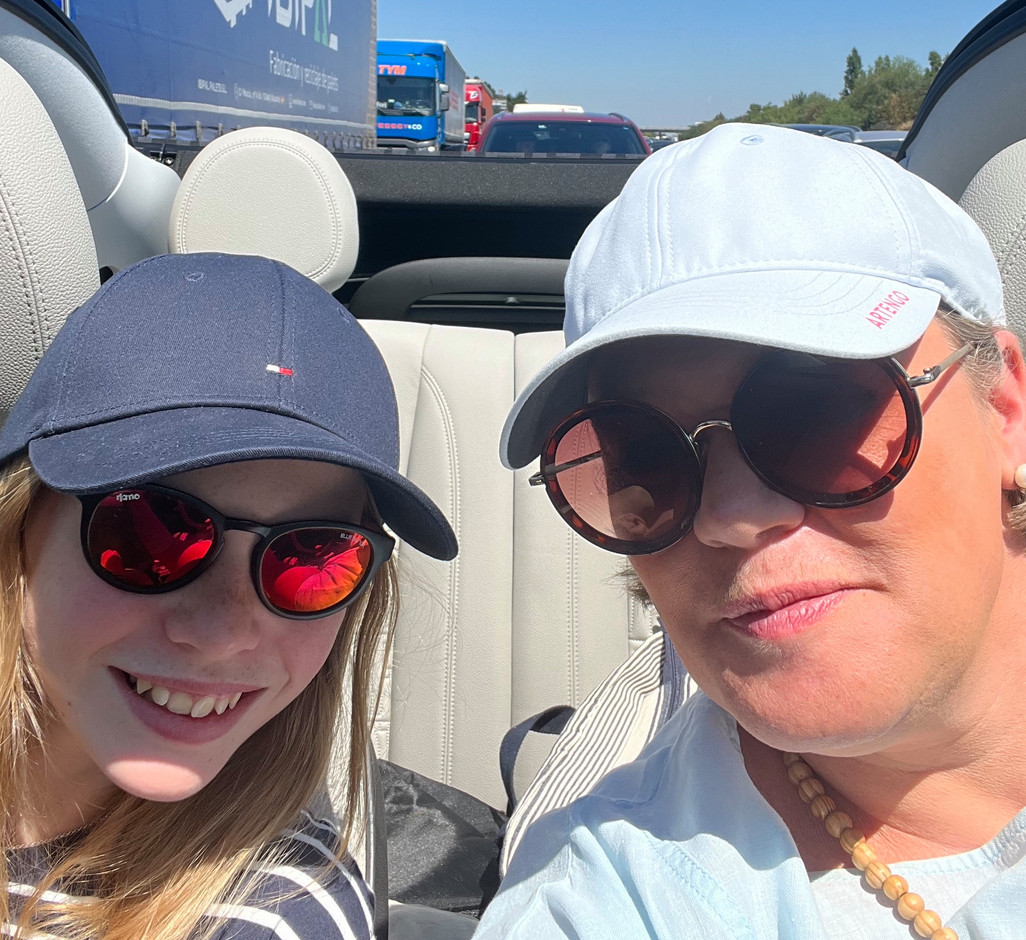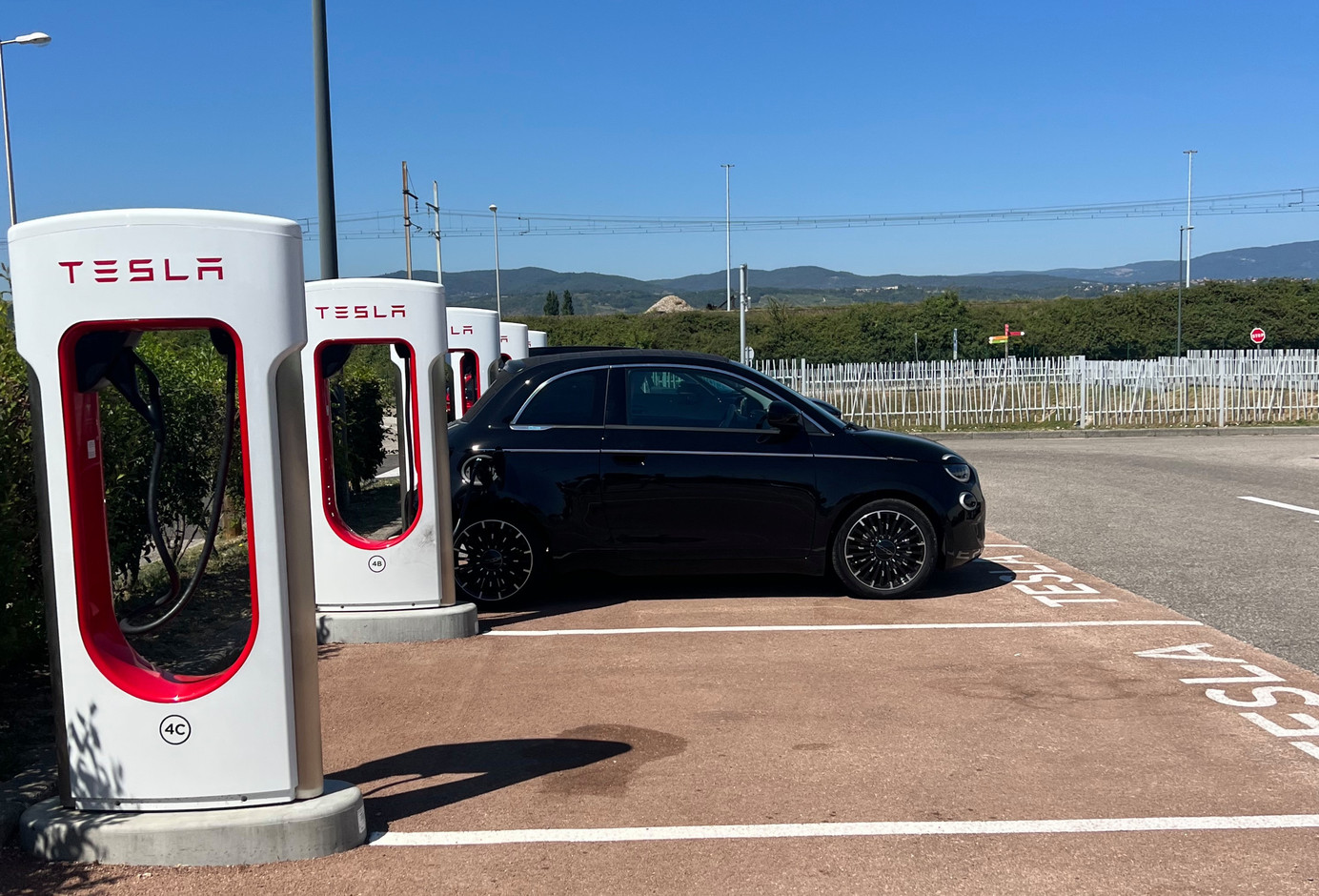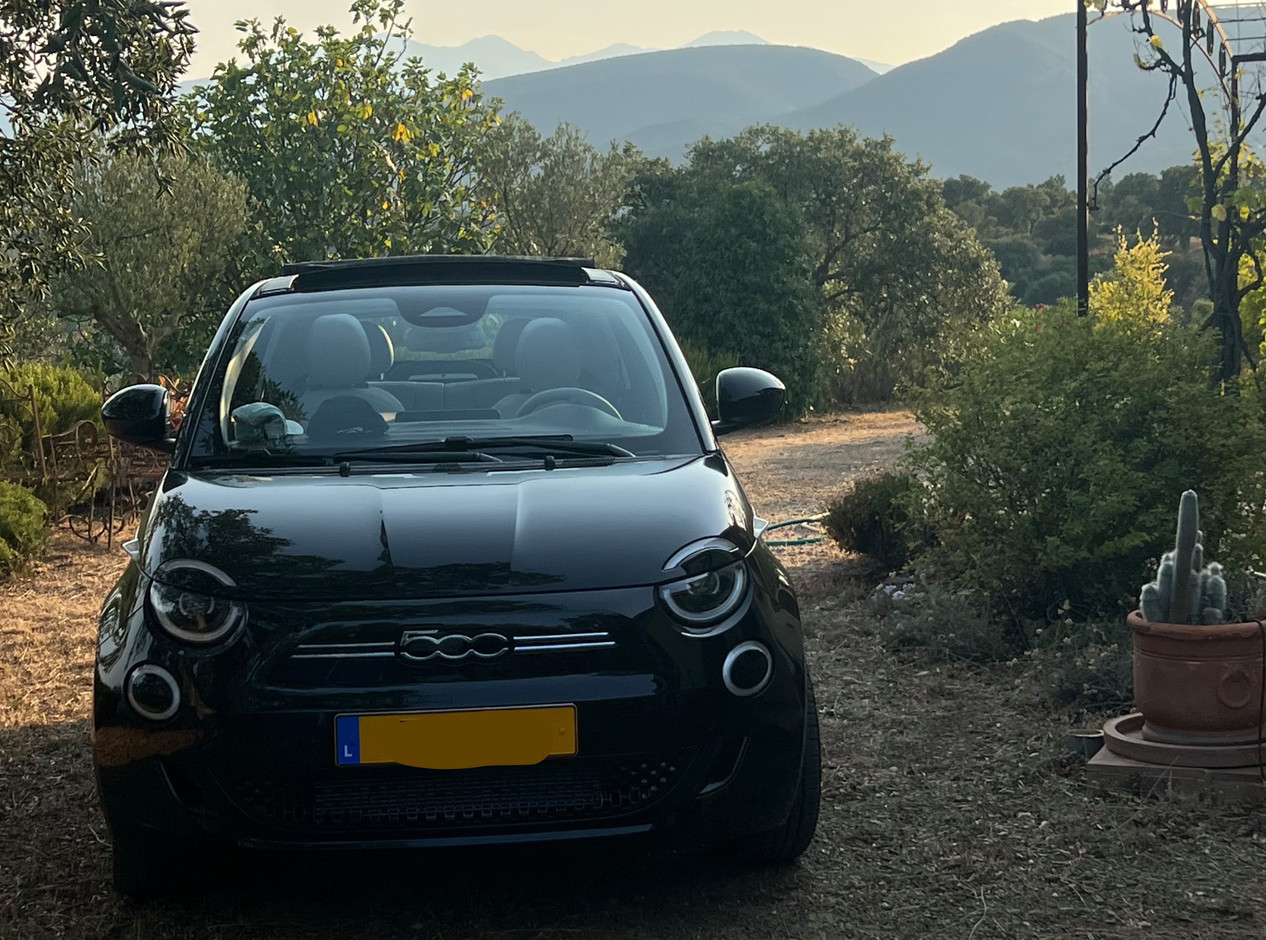"After Thionville, you'll have to call the ACL because you'll have run out of electricity," someone told Claudine in early July when she suggested the idea of driving to her holiday home in the south of France--more than 1,000 km from her home in Luxembourg--in an electric Fiat 500.
The Italian car's range of around 260 km does not make it suitable for driving on the highway to her destination. Claudine knew this, but she was determined to make the most of her little car--which she named Tony--that she has just bought. Another motive for her trip was to show her husband--who gently mocked the idea--that, with a little preparation, it was possible to get there.
"It was a bit frustrating to receive this car a few days before going on holiday and then leave it in the garage for a month. It's like getting a present and then not being able to touch it. At the thought of taking the Fiat 500 on the road to the south of France, my husband started laughing, as did the seller. I took it as a challenge," explains Claudine, who lives in the north of Luxembourg and is a trainer in the hospitality sector. Initially, she chose this e-car model for short daily trips.
Getting information from friends and the ACL
Before taking to the road with her 13-year-old daughter Alix, Claudine sought information on good practice. ". I stopped by to ask whether it was better to use national roads or motorways with an electric car, on top of some other advice. Obviously, for energy recovery, it's better to use the secondary roads, but I opted for the motorway anyway because of the more developed infrastructure, with rest areas and more charging points. I didn't really want to end up in the French countryside if something unexpected happened. I like risk, but it has to be controlled," smiles Claudine, who also took advice from a friend who went electric two years ago. "I wanted information on maps to pay at charging stations and on applications to use such as --which calculates the route according to the location of charging stations--or , to find a nearby station," says Claudine. With some questions still left unanswered--like the compatibility between her car and a Tesla fast charging station--Claudine decided to take the plunge.
A difficult first step
With 271km of autonomy when they started in Erpeldange-sur-Sûre, Claudine and Alix finally left for their holidays. At the same time, Claudine’s husband and their youngest daughter set off two hours later in the family's other car, a BMW diesel.
After having driven 175.6 km for an average consumption of 14.1 kWh, mother and daughter consider a first recharge at a rest area in Toul. A bad surprise awaits them there as the charging station doesn’t work. "We looked on the application to find a nearby charging point, telling ourselves that in Toul, there must be charging sites. But we couldn't find them! After an hour's search, we found a charging point in a McDonald's car park. Charging is free, but when we plugged in the car, it said... it would take 27 hours to fully charge," Claudine sighed. At this point, Claudine wondered if she would ever make it to her destination.
Claudine and Alix hesitated. The rest of the family join them temporarily. Two hours later, Claudine decides to turn back to Laxou, a few kilometers away, where the Fiat 500 can be connected to a Tesla Supercharger. "The good surprise of the day! The Tesla Supercharger works and it's so simple. In 28 minutes, the battery is 80% charged. From the start, we should have relied on the application and opted for the Tesla charging stations. In short, we shouldn't have tried to outsmart the app," Claudine says.
We arrived at a motorway service area with seven Ionity stations. But there were dozens of electric cars waiting for a space.
Stations taken by storm
After this first electric fill-up (for about €17), Claudine and Alix set off again, planning a stop at the Langres Perrogney rest area, 150 km further on, which provides a new ordeal. "We arrived at a motorway service area with seven Ionity charging points (a supplier with a network of more than 400 charging points in Europe), but there were dozens of electric cars waiting for a space. And the tone was sometimes a bit heated. After an hour and a half's wait, we got to a charging station…but it was impossible to get it to work. Fortunately, the Ionity helpline managed to quickly unblocked the situation without making us pay for the 35-minute charge to reach 90% of our autonomy."
160km further on, they stopped at a Tesla Supercharger in Tournus. With €14.96 and 35 minutes to spare, the car reached an autonomy of 90% (220 kilometres). Mother and daughter set off again for Sainte-Colombe and spent the night in a guest house called La Glycine.
"Halfway there, we understood the importance of planning long journeys with an electric car. It forces us to travel differently. It's also very different in terms of driving. With the temperature at 37°C, we didn't save on air conditioning. But I was careful with my speed, whereas normally, when I go down south, I am use the outer overtaking lane as often as possible to go as fast as possible. At least I didn't lose any [driving licence] points this time," Claudine joked.
Only 16 Superchargers open to non-Tesla
After a night's rest and a recharge at the guest house, Claudine and Alix set off again for the Tesla Supercharger in Salaise-sur-Sanne. This time, 25 minutes was enough (for 100% autonomy and €8.84) to get to the Nîmotel car park in Nîmes and its Tesla terminal. The only problem is that the Supercharger in question was not open to other car brands. "In France, there are only 16 Superchargers open to non-Tesla. That'll teach me not to have checked the information on the ABRP application,” admits, Claudine who then had only 52km of autonomy left. "There were 231km to go and it was 41°C," she sighs. "I'm not going to hide the fact that at that moment, we were fed up with the road!"
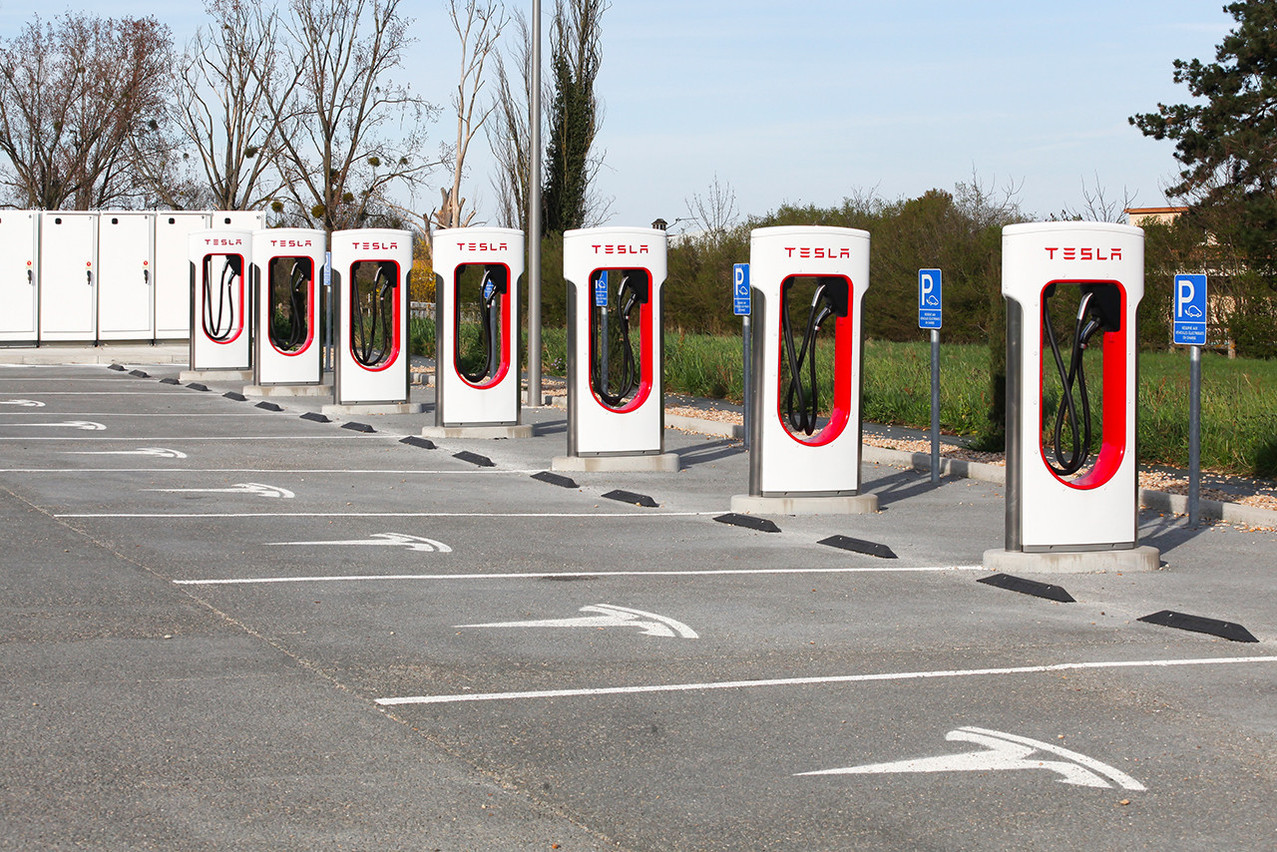
Supercharger stations provided by Tesla in France. (Photo: Shutterstock)
After a quick search on an app, they headed to a shopping centre in Nîmes Ouest which has Allego charging stations. "In the end, we plugged in the car and cheered ourselves up by going shopping and enjoying the air conditioning in the shopping centre,” Claudine says. With a charging time of 75 minutes and €8.62, their car reached 100% autonomy.
The travellers undertook another 40 minute stop at the Tesla Supercharger in Rivesaltes. After having driven 195.4km and a remaining range of 31km (15% of the battery), which was cutting it fine slightly for the 37.7km required to finally reach their destination.
Total: 1,115.2km for €66.42
Claudine was not unhappy with this adventure, but will not repeat the experience next year. She did, however, succeed in her challenge and understands what it means to switch to an electric car for long distances. "It was a great experience. And I noticed that there are two worlds in electric cars when a woman in a Porsche asked me if she could take my place because my little Fiat 500 needed less electricity than her car.”
Despite the various unforeseen events, Claudine does not miss the internal combustion engine, although she is aware that the Fiat 500 is not cut out for this type of journey. It's a different kind of trip. "I don't know if we can say that we lose time during refuelling, because we can use it to do some shopping, read, etc.", concludes Claudine who believes that everything or almost everything depends on good planning.
Claudine and Alix travelled 1,115.2 km in their electric Fiat 500 and made eight recharging stops, for a total of €66.42, taking into account that two of the recharges were free.
This story was first published in French on . It has been translated and edited for Delano.
